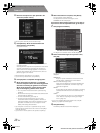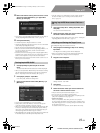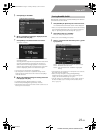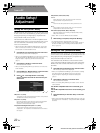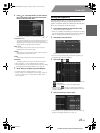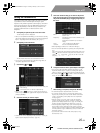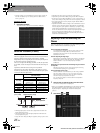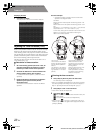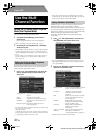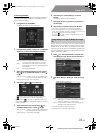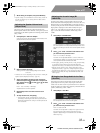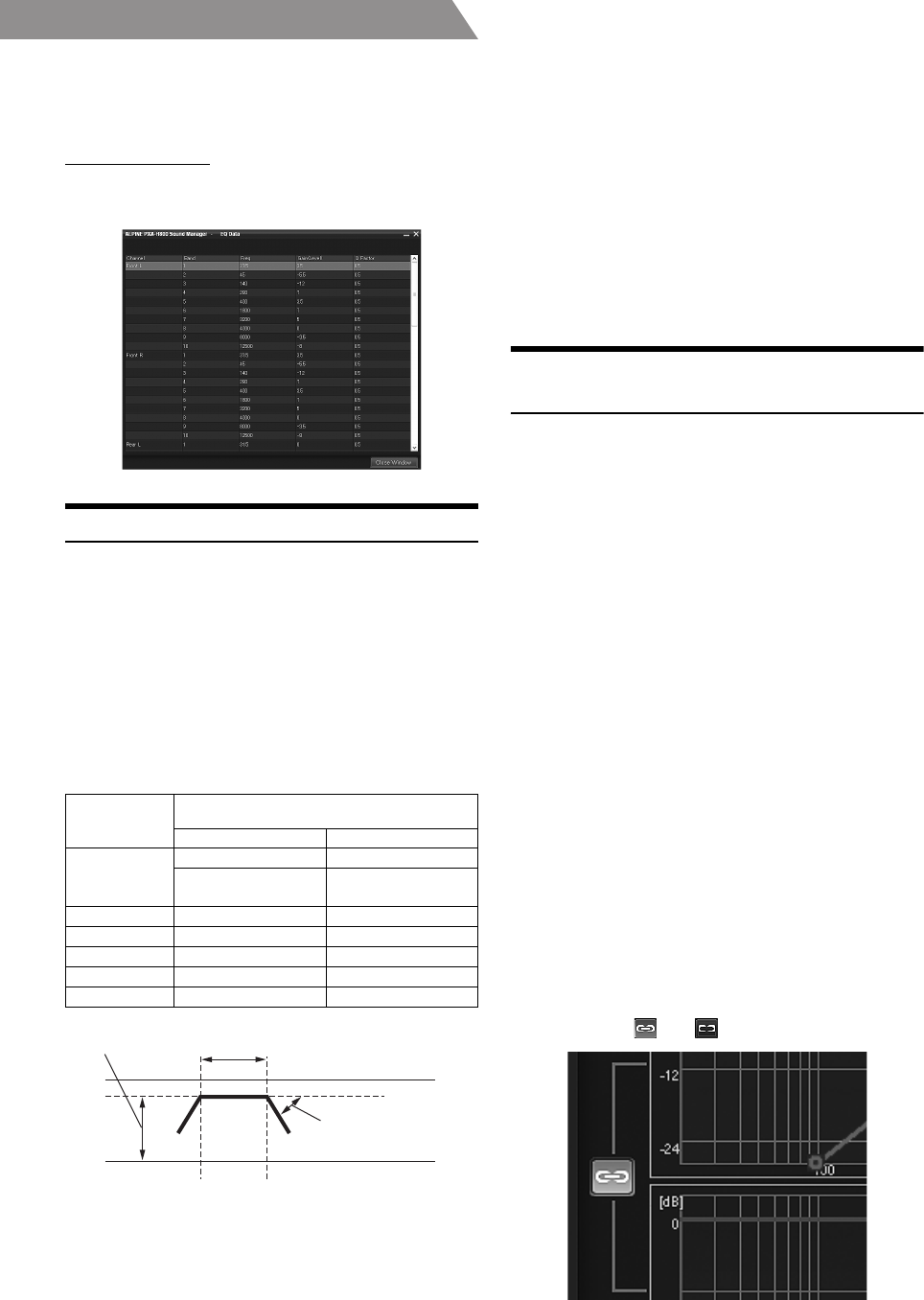
26-EN
01GB06PXAH800.fm
ALPINE PXA-H800_EN 68-13530Z65-A (B5)
From a PC
• After the setting, it is recommended to store the setting contents on
the unit. For details, refer to “Storing the Preset Values (Preset
Store)” (page 12).
Displaying the data
1
Click [Show All Data].
The setup values for all the channels will be displayed.
About the Crossover (X-Over)
Crossover (X-Over):
This unit is equipped with an active crossover. The crossover limits the
frequencies delivered to the outputs. Each channel is controlled
independently. Thus, each speaker pair can be driven by the frequencies
for which they have been optimally designed.
The crossover adjusts the HPF (high pass filter) or LPF (low pass filter)
of each band, and also the slope (how fast the filter rolls off the highs or
lows).
Adjustments should be made according to the reproduction
characteristics of the speakers. Depending on the speakers, a passive
network may not be necessary. If you are unsure about this point, please
consult your authorized Alpine dealer.
• HPF (high pass filter): Cuts the lower frequencies and allows the
higher frequencies to pass.
• LPF (low pass filter): Cuts the higher frequencies and allows the
lower frequencies to pass.
• Slope: The level change (in dB) for a frequency change of one octave.
• The higher the slope value, the steeper the slope becomes.
• Adjust the slope to FLAT (0 dB/oct) to bypass the HP or LP filters.
• Do not use a tweeter without the HPF on or set to a low frequency, as
it may cause damage to the speaker due to the low frequency content.
• You cannot adjust the crossover frequency higher than the HPF or
lower than the LPF.
• Adjustment should be made according to the recommended crossover
frequency of the connected speakers. Determine the recommended
crossover frequency of the speakers. Adjusting to a frequency range
outside that recommended may cause damage to the speakers.
For the recommended crossover frequencies of Alpine speakers, refer
to the respective Owner’s Manual. We are not responsible for
damage or malfunction of speakers caused by using the crossover
outside the recommended value.
Adjusting X-Over and Switching the
Phases
This section describes how to adjust X-Over. Before working on this,
refer to “About the Crossover (X-Over)” (page 26).
Hint for adjusting the subwoofer
If the subwoofer is installed on the rear deck, setting a gentle
L.P.F. slope (for example 6 dB/ oct.) makes the sound
localization more to the rear. This can also affect the acoustic
localization of the front.
Hints for adjusting the high range
Depending on the speaker, inputting low frequency component
signals (about 2 kHz or less) with the H.P.F. adjustment could
result in distortion. If so, set a steep slope (for example
30 dB/oct.).
When doing so, adjust so that the mid and high range sounds do
not separate.
Normally use with the L.P.F. off. If the high range is too strong,
we recommend adjusting for a gentle slope.
Hint for adjusting the low range
When a subwoofer is connected and you are using a speaker
with a low range of under 10 or 12 cm (3-15/16” or 4-3/4”),
setting the low range H.P.F. to “OFF” can result in distortion
when low frequency components are input.
If so, set the H.P.F. slope to a value suited for the speaker’s
frequency response.
1
Click [X-Over] for [Shortcut] tab in the main menu.
The X-Over Setup screen is displayed.
• When you click [Mobile Sound Manager] on the Function switching
tab, and then [X-Over], the X-Over Setup screen will also be
displayed. Refer to “Operating the Function Switching Tab”
(page 7).
2
Click either [ ] or [ ].
Cutoff frequency adjustment range
(1/6 octave steps)
HPF LPF
Front High
20Hz to 18kHz 22Hz to 20kHz
1kHz to 18kHz
(Tweeter only)
1.1kHz to 20kHz
(Tweeter only)
Front Mid
20Hz to 18kHz 22Hz to 20kHz
Front Low
20Hz to 18kHz 22Hz to 20kHz
Rear
20Hz to 18kHz 22Hz to 20kHz
Center
20Hz to 18kHz 22Hz to 20kHz
Subwoofer
20Hz to 180Hz 22Hz to 200Hz
Level adjustment
(0 to -12 dB)
Output frequency range
Slope FLAT
Slope adjustment
20 Hz
HPF cut-off
frequency
LPF cut-off
frequency
(Different from actual display)
01GB00PXAH800.book Page 26 Tuesday, February 8, 2011 9:04 PM



